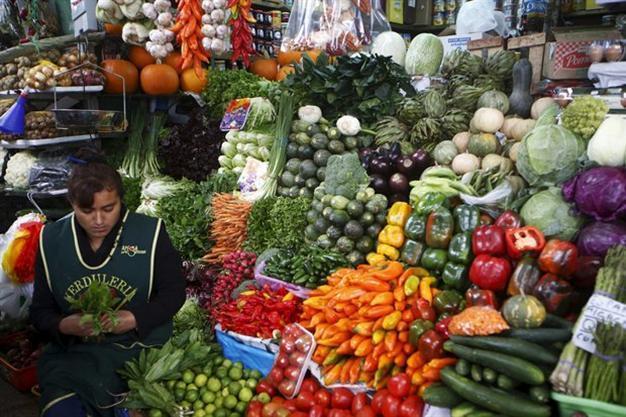Shine of the sun
Aylin Öney Tan - aylinoneytan@yahoo.com

REUTERS photo
Peru was like my promised land. I never had a chance to visit the country, but Peruvian culture has always been close to my heart. Since my high school years, it was on my top destination list, maybe just because of a dreamy picture of Machu Picchu. When I was studying conservation in Rome, my course coordinator was from Peru and the best cook in our international group was a friend from Peru. Later, I had the chance to meet the legendary personality Sylvio Mutal, an eminent figure of the Peruvian archaeology and conservation scene. Mutal was a charismatic man to my surprise, who happened to speak a rather old style of pompous but perfect Turkish. A real Istanbul gentleman of Jewish descent, he was born and raised in Istanbul but later in life, he ended up living in the Netherlands and Peru. He not only spoke several languages like a native, but also many dialects of Peruvian languages. We were all mesmerized by his intellectual speeches, and jokes he exchanged in seven or eight languages simultaneously.
Later when I switched to food writing, my interest in Peru shifted its focus from architecture to food and the crazy interesting ingredients that came from this distant land. I was among the ones who discovered the virtues of quinoa before it became a craze in the culinary world, especially as a diet fad. From the heights of the Andes Mountains to the jungle simply named “Montaña,” or to the arid Pacific coastline dotted with a handful of irrigated fertile oases, Peru is a diverse country home to many products that are commodities in our daily diet. Potatoes originated in this complex land; so did peanuts. There are almost 4,000 potato varieties that still exist in Peru, not to mention the 2,000 varieties of sweet potatoes. Before the introduction of wheat products and bread, the Spanish conquistadors had different colored potatoes on their noble banquets in place of bread. The voyage of peanuts is thrilling; first cultivated in pre-Inca times in ancient Peru, it became a major food item of Columbian exchange after the 16th century, making its way to West Africa and then, through the slave trade, transported to North Africa. It was also brought to South Asia by the Portuguese, together with another South American product, peppers.
During the last decade or two, the world has discovered Peruvian cuisine thanks to chefs like Gaston Acurio and truly embracing it. In a way, it is a real fusion of cultures, mainly native indigenous cookery mixed with Spanish food culture, bearing strong Moorish influences. The African connection is traceable in some dishes while later strong waves of cultural impact have come from the other side of the planet, with Japanese and Chinese immigrants. But above all, the true roots of Peru are in the Inca culture, shining golden with sunny tint of yellow aji amarillo peppers together with the abundant use of yellow potatoes and yellow corn. May be it was the Inca sun worship that made the Peruvian dishes so appetizingly bright with yellow.
Peru welcomed all influences from the world, but the world also welcomed all Peruvian ingredients happily integrating into their own cuisine. I can see quinoa being adapted easily to Turkish ways of cooking, and looking anxiously at the aji peppers in our pantry. I must admit Machu Picchu is no longer my ultimate target but instead, I’m more anxious to have a taste of the Lima dining scene. The golden touch of sun seems to shine over the plates there!
Bite of the Week
Fork of the Week: We may not yet have a Peruvian restaurant but a sample of the best of Peruvian tastes is to be found at OPS Passage Café in Karaköy. Created exclusively by young Peruvian chef Roberto Segura, the menu is both exciting and stimulating for Turkish palates. I loved the chef’s interpretation of the traditional pulpo al olivo, charcoal grilled octopus with olive aioli; the quinotto or quinoa risotto had the distinctive bite of aji, the yellow Peruvian amarillo chili, reminding me of bulgur pilaf made with hot green peppers. Another memorable plate was the Beef Tiradito with anticucho sauce, aji and toasted quinoa, a perfect example of mixed influences in Peruvian cuisine with modern touch.
Cork of the Week: Peruvian wine is not yet imported to Turkey, but instead the distilled grape spirit pisco will make your day if you’re looking for a Peruvian taste in your glass. OPS Passage also provides a good selection of pisco-based cocktails; the Peruvian Flowers is delightfully floral as its name suggests, with passion fruit and elderberry, and a kick of spicy ginger tonic and the Pisco Sour is refreshingly cool with strong citrus bitterness. The fusion glass in the bar selection is definitely the Pisco Turco, a shot of pisco paired with sharp Turkish pickle juice and a selection of salty, briny Turkish pickles.
Last week, just on the other side of the Bosporus, I had the chance to come across another very exciting Peruvian taste: Coffee. The real hunt of the Istanbul Coffee Festival at the Haydarpaşa Station was discovering Peruvian coffees represented by the Sanawasi Group and HVC Exportaciones. The cherry coffee had a smooth chocolate aroma with a hint of sweetness and slight acidity, giving it an almost cooling refreshing kick. Cafe Femenino is only picked and processed by women and finally the Misha Coffee is the rarest and most expensive coffee variety in the world. Now all will hopefully be available in Turkey.
